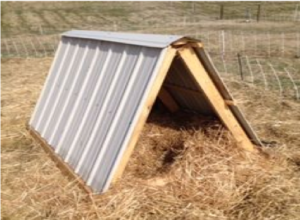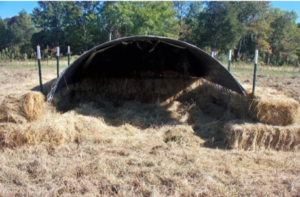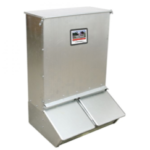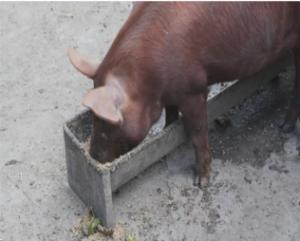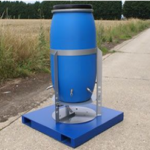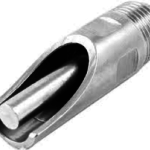How to Start a Pig Operation
go.ncsu.edu/readext?682777
en Español / em Português
El inglés es el idioma de control de esta página. En la medida en que haya algún conflicto entre la traducción al inglés y la traducción, el inglés prevalece.
Al hacer clic en el enlace de traducción se activa un servicio de traducción gratuito para convertir la página al español. Al igual que con cualquier traducción por Internet, la conversión no es sensible al contexto y puede que no traduzca el texto en su significado original. NC State Extension no garantiza la exactitud del texto traducido. Por favor, tenga en cuenta que algunas aplicaciones y/o servicios pueden no funcionar como se espera cuando se traducen.
Português
Inglês é o idioma de controle desta página. Na medida que haja algum conflito entre o texto original em Inglês e a tradução, o Inglês prevalece.
Ao clicar no link de tradução, um serviço gratuito de tradução será ativado para converter a página para o Português. Como em qualquer tradução pela internet, a conversão não é sensivel ao contexto e pode não ocorrer a tradução para o significado orginal. O serviço de Extensão da Carolina do Norte (NC State Extension) não garante a exatidão do texto traduzido. Por favor, observe que algumas funções ou serviços podem não funcionar como esperado após a tradução.
English
English is the controlling language of this page. To the extent there is any conflict between the English text and the translation, English controls.
Clicking on the translation link activates a free translation service to convert the page to Spanish. As with any Internet translation, the conversion is not context-sensitive and may not translate the text to its original meaning. NC State Extension does not guarantee the accuracy of the translated text. Please note that some applications and/or services may not function as expected when translated.
Collapse ▲The following article was written by Appalachian State University student Rebecca Brown, who interned at the Watauga office of N.C. Cooperative Extension.
How to Start Your Pig Operation
Before beginning your pig operation, make sure to invest in equipment that will ensure your own safety and help you efficiently raise pigs.
Proper equipment and facilities include having your pigs in an enclosed area. The recommended area is 8 square feet per pig. Electric fencing is the best way to secure your piglets. Training your pigs to respect the electric fence is very important. Upon the pigs arrival, place them in a pen that is made of woven wire or board fencing. Next, run one strand of the electric fencing inside the woven wire fence. After about 1-2 weeks the pigs will be trained to the electric fence. For pigs, after being trained, 2 strands of electric fencing are recommended for their enclosure.
Other equipment that is very significant for your pigs is to have shelters to provide warmth during the cold season and shade during the hot season. During the hotter temperatures, constructing wallows will also help keep pigs cool. There are many different ways to design shelters for your pigs, so make sure to choose a design that suits your pigs essential needs.
For feeding, a self feeder or trough can be used. A self feeder is typically made out of sheet-metal and has flaps that the pigs lift to access their feed. Feed troughs are a cheaper option, but the pigs may stand in it and as a result mud and dirt could get into their feed.
Feed is also a good technique to move pigs from one area to another. You can train pigs by having feed in a bucket, so when the pigs hear the sound of feed in the bucket they will follow you because the pigs know they are being fed. You can purchase a red sorting panel to assist in moving pigs as well.
For pig waterers a cheap option is to make your own by purchasing a barrel and adding two water nipples on two sides of the barrel. You can also purchase a barrel or drum that is low enough to allow access for the pigs to drink out of. With feeding and providing water for your pigs the most important tip is to move them consistently so that these areas do not get too muddy. Moving feeders and waterers can help keep them stay clean. Having your feeders and waterers on a raised surface can also keep them clean. Note that if you are on a tight budget, you can just use a piece of wood placed under the barrel as a tool to keep the barrel from getting stuck in the mud.
Once you have your equipment and facilities set up, starting with 2-3 feeder pigs is recommended. Feeder pigs are those you purchase from a breeder and provide feed for them until they reach the ideal slaughter weight, which is typically 250lbs-325lbs. Starting with feeder pigs is recommended when you are beginning your pig operation to gain experience and to have the least amount of stress.
If you choose to have a farrow to finish operation this involves having sows and a boar or breeding sows using artificially inseminating (AI). Additional equipment and facilities for a farrow to finish operation include a heavy use area, which is where sows are moved to farrow, as well as farrowing pens or structures. Ultimately, a farrow to finish operation includes more investments on startup costs and a lot of components that can be hard to juggle for a first time pig farmer.
When you are looking to purchase feeder piglets, make sure to buy them from a reliable and reputable source. Obtain any important records such as health, dewormer, or vaccination history, in case you need to administer or hire someone to give any medications to your pigs. In the circumstance of having to administer additional medications make sure to have a pig snare or alternative way to secure your pig. This may involve having an indoor facility or a sturdy pen to provide additional attention. Ask the farmer if you can visit or see a picture of the piglets you are buying to ensure you are receiving healthy piglets. When you are bringing your piglets home, be sure to watch their health to observe any change in behavior or body condition. They should be about 40 to 60 pounds, which is the weight when they are about eight weeks old.
Choosing which breed of pig to raise depends on your own goals, as there are many different breeds of pigs. Most of today’s breeds are utilized for their fast growth rate, and lean meat production. When you are raising piglets make sure to identify what your personal goals and purpose are. Are the pigs for yourself or do you plan to sell meat for retail or wholesale? Do you want to only do feeder piglets or eventually have a breeding herd? Outlining your own goals and purpose for raising pigs can help you create an efficient farm management plan. If you have any questions, please call the Watauga office of N.C. Cooperative Extension.
Works Cited
https://extension.psu.edu/raising-small-groups-of-pigs
http://pods.dasnr.okstate.edu/docushare/dsweb/Get/Document-2127/ANSI-3656web.pdf
https://www.youtube.com/watch?v=lOzvyWR6jPg
http://ulster.cce.cornell.edu/resources/the-dirty-truth-about-pastured-pigs
https://parasitology.cvm.ncsu.edu/vmp991/swine/supplement/hooped_shelters_hogs.pdf
https://www.porkcdn.com/sites/porkorg/library/2016/08/major_swine_breeds.pdf





